Twin sewing machine needle: how to thread and sew?
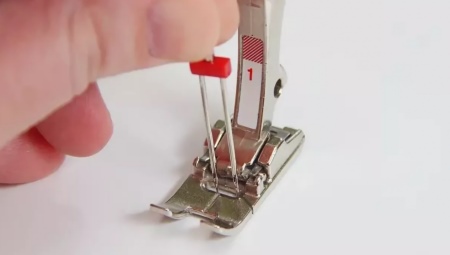
No matter how paradoxical it may sound, a small needle plays a key role in sewing. Of all the elements of the sewing machine, the thinnest needle receives the greatest load during operation. Therefore, such a tool should not only be of high quality, but also correctly selected for the type of material. It is easy for a seamstress with little experience to become confused by the wide variety of specimens and their characteristics. The ability to understand markings and purpose makes it possible to purchase the necessary part for a specific purpose.
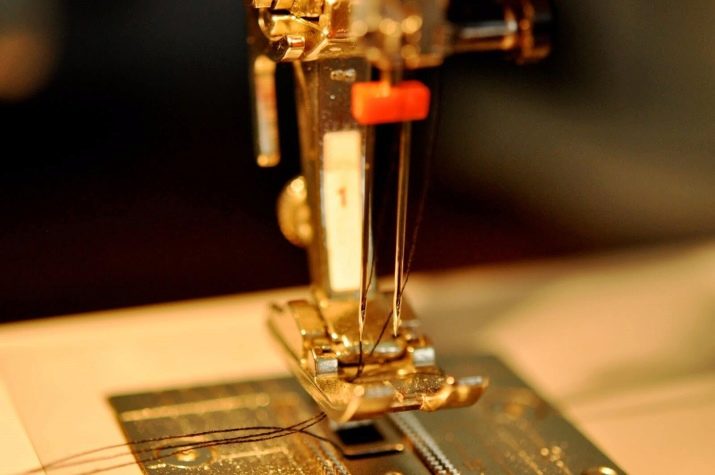
Types and purpose
A double stitch is made using a special needle, which is actually 2 needles connected by one holder.
This unpretentious element can significantly expand the possibilities of sewing products at home.
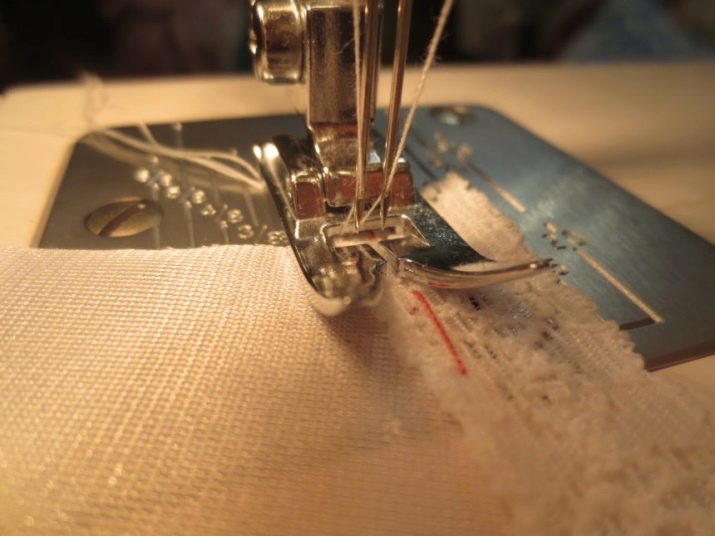
Depending on the type of fabric, 4 types of double needles can be distinguished.
- Universal needle suitable for almost any fabric using natural or synthetic threads. It can also be used for embroidery or for neat zigzag stitching. The “Universal” needle is suitable for cotton, silk, tulle.
- For stretch and knitted fabrics, the use of which in sewing work is difficult due to their high elasticity, use a needle with a rounded tip. It does not damage the fibers of the material during operation. For such knitwear, it is marked with a special marking - "Stretch".
- Needles marked "Metallic" designed for sewing stitches using metallized threads.
- Thick needles allow stitching on fabrics with a high density, such as denim, suiting. They are marked with the "Jeans" icon.
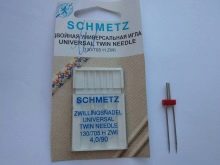
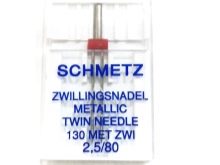
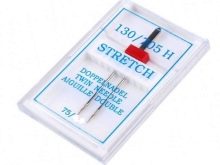
The width between the needles is also different, depending on the fabric that will be used to create the garment. It can be narrow (1.5 mm thick) and wide (up to 6 mm). In order not to be mistaken with the choice and purchase the desired double needle, pay attention to the designations indicated in the marking of 2 numbers: the first indicates the distance between the needles, the second indicates their size, and they must be of the same section.
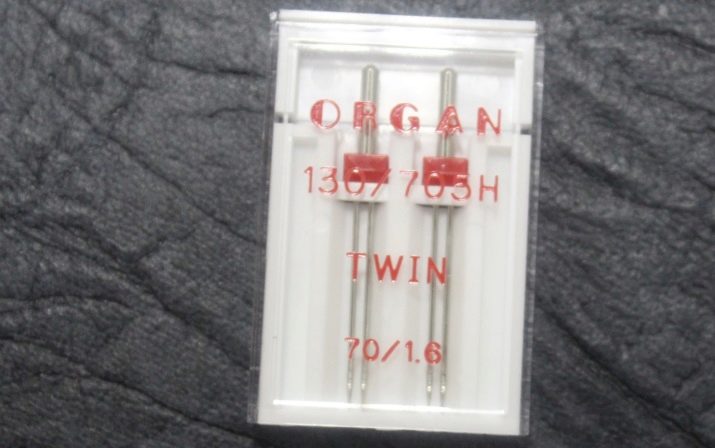
The main task in working with such a sewing element is precisely match the thickness of the needle and thread to the type of fabric. Only then can you achieve straight and beautiful lines. It is a great pleasure to work with such a needle. It also provides unlimited possibilities for handicrafts. It can be tucked in with multi-colored threads and get unusual decorative embroidery. A small distance between the needles will allow you to achieve a shadow effect, and from the resulting contour - create a three-dimensional pattern.
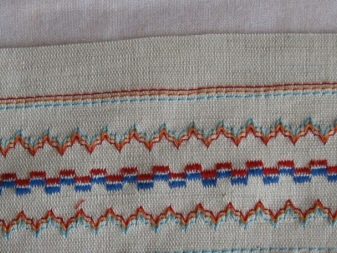
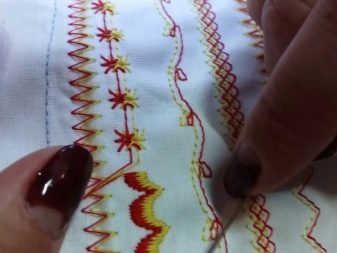
Processing the edge of a jersey with a double stitch makes it possible not to use a coverstitch machine, while performing a beautiful and neat stitch when sewing linen and children's clothing.
Also, without such an attribute, it is almost impossible to create unusual collar edges, cuffs, pockets. Quilts are sewn quickly and effectively.
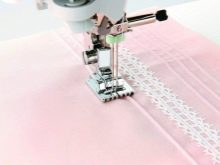
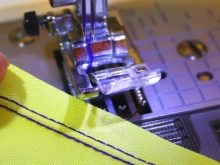
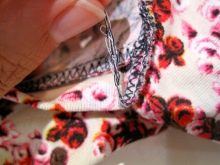
How to thread and sew?
Not all sewing machines can be fitted with a twin needle, but only those that can sew a zigzag stitch. The main thing to consider when choosing such a needle is what kind of fabric you are going to use. Since, as noted above, the width between them and their thickness directly affect the quality of the seam.
Technically, such a needle is installed in the same way as any other. It is important to remember that the cut of the needle is located at the back: that is, it is directed backward, and its round side should be in front. Threading the threads into 2 needles at the same time will not be difficult. The thread is threaded in the same way as with one needle. However, you need 2 spools for sewing. Experienced craftswomen position the spools so that one unwinds the thread counterclockwise and the other clockwise. This will prevent them from tangling while sewing.
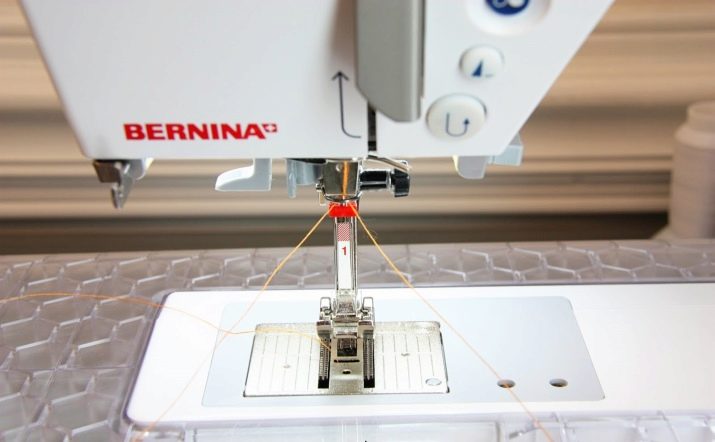
Both threads will pass through the same top tensioner and must be loosened to prevent the thread from pulling or breaking. The tension in the lower bobbin must also be released. When sewing with a double stitch, it is best to use thread with a good stretch. And to create a high-quality stitch, the lower thread should be thinner than the upper thread, since the lower thread will be used by the upper 2, creating a zigzag stitch.
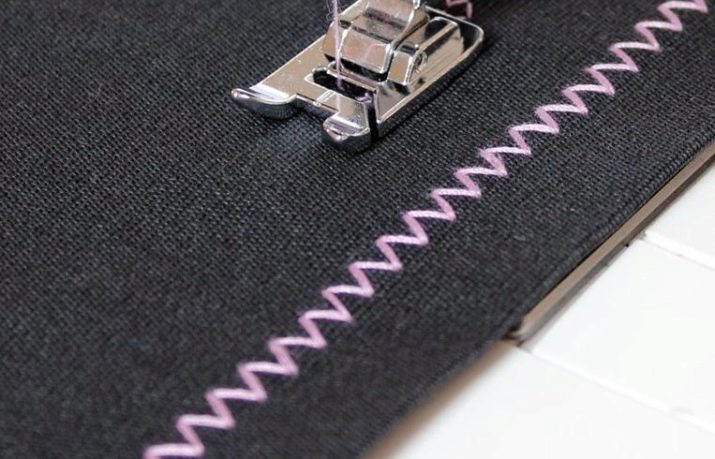
How to use it correctly?
Sew with a double needle on a sewing machine, like a regular one. The main thing is to choose it correctly. The first thing to look for is the maximum width of the throat plate slit. The wrong needle selection can cause it to break during sewing, as the slit in the plate will be caught. Here, the best guideline is the maximum permissible zigzag stitch width.
Before starting work, check which mode the stitch selection switch is in. And this is where mindfulness is needed. The twin needle should be in straight stitch mode only.
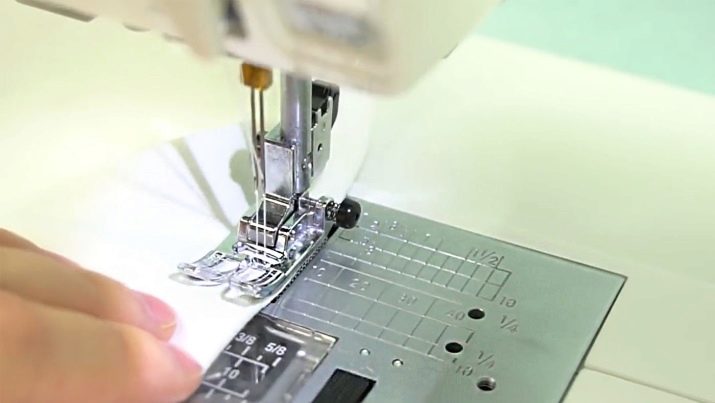
This must be monitored strictly so as not to accidentally switch to another mode. Any other position will break the element.
A small distance between the needles (0.16-0.25 cm) allows to reduce the risk of breakage. To be sure, first check how the needle passes without thread at idle speed. It should run freely without touching the edges of the throat plate.
Good quality threads should also be used. Choose thin and stretchy ones. For stitches to be produced without gaps and with the correct tension, one thread must be one size smaller.
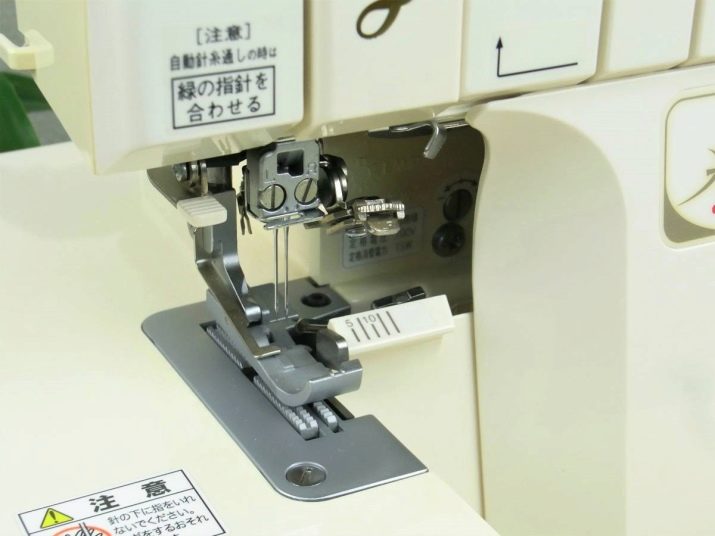
How to sew decorative seams on knitwear?
The width of the ornament made with a double needle will be maximum half a millimeter, and this is its main feature.With a double needle, you can both stitch and stitch off, embroider, make quilted seams. Moreover, such stitches are also capable of performing a decorative and finishing role along the bottom of the product.
Such a needle for a seamstress is a real lifesaver. For example, to add beauty to a blouse, you need to add ruffles. They can be done using this device.
To do this, you need a needle with a large distance (0.5-0.6 cm) and a thin elastic band wound on a bobbin instead of thread. It remains to make a seam. The used elastic band itself will neatly collect even assemblies.
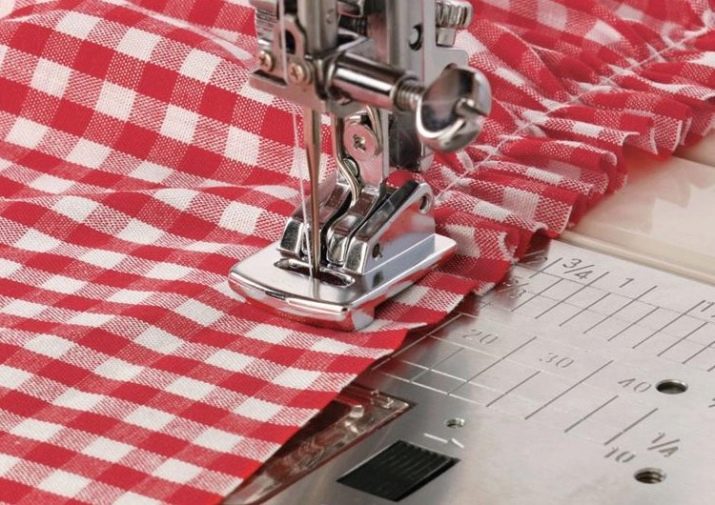
In turn, the tandem of a twin needle with a special foot will further expand the possibilities when working, enriching it with additional operations. With their help, you can sew on thin beads, cords, form tucks, and more.
For knitted fabrics, the thinnest double needles are used, the distance between which is 0.25 and 0.4 cm. Moreover, the tips of the points of such needles are rounded. This is so that the needle does not pierce, but gently pulls apart the fibers of the material. Most often, a cover stitch is used for such fabrics, which becomes flat after unfolding the sewn parts.
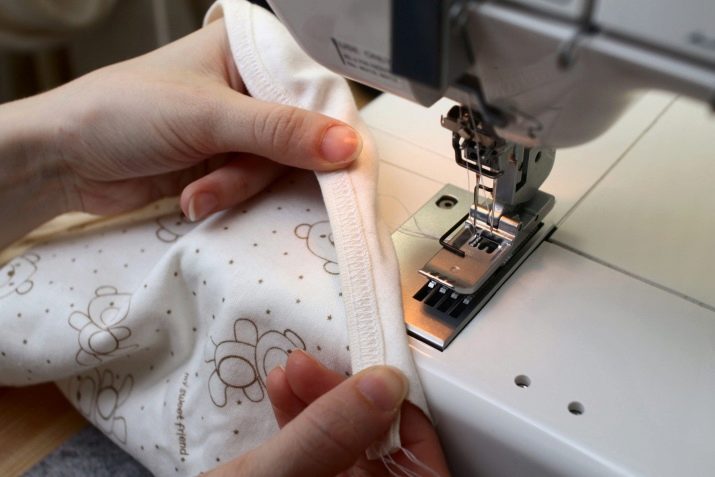
The main thing is to take into account the type of knitted fabrics. If the jersey is dense, thick and not very elastic, you need to loosen the bobbin thread tension. The situation is different with knitted jersey, which stretches quite a lot and requires serious stitch stretch. For jeans, the double stitching on the delayed appliques is their main highlight. A special needle with pointed tips that penetrates into thick layers of material allows you to get an even seam.
The decorative stitches look great. Wherein the twin needle sews 2 times the number of stitches in one pass.
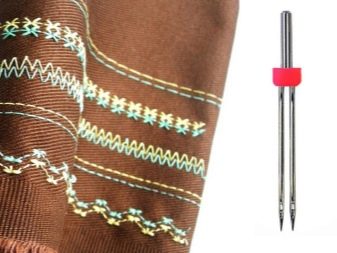
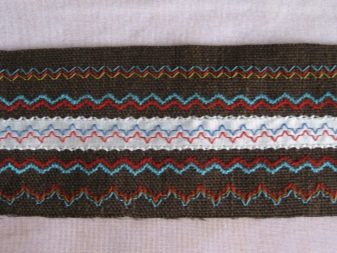
In addition, changing the thread tension makes it possible to sew a variety of seams. For example, embossed. Stitches can be straight, wavy, zigzag or convex.
Specificity of work and safety
Once the twin needle has been correctly installed, as well as the threading and setting of the thread, you can start sewing products of almost any complexity. Hem down edges, sew on tape, trim and finely embossed seams with cord or elastic.
When working with a twin needle, you should follow some simple rules:
- the wheel on the sewing machine must rotate towards itself;
- the choice of needle and the thickness of the threads depends on the fabric you are going to use;
- despite the fact that the thread tension is set before work, it must be constantly monitored, as well as the stitch and the specified stitch dimensions;
- before you start laying the seam, you need to put the jersey under the foot, make a precise puncture and only then lower the foot;
- if in the course of work the fabric accidentally comes off the teeth, do not stop work immediately.
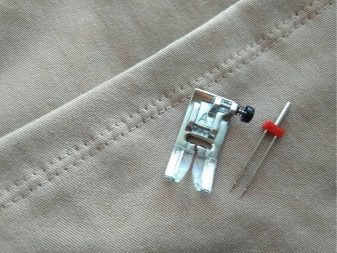
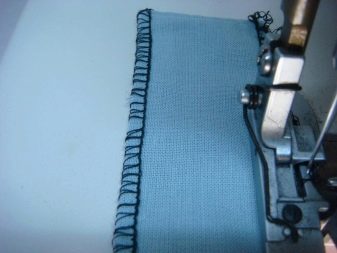
Follow the mandatory safety rules when using the sewing machine.
- If you are using a twin needle for the first time, read the instructions carefully. Each manufacturer indicates the technical capabilities and features of the tool.
- Store the needles in a needle case or in a special box with a lid. This is especially true for broken elements. They should be stored separately to avoid accidental injury.
- Check the number of needles after each job to avoid accidental loss.
- Never use needles with mechanical defects. At best, they can form uneven punctures; at worst, they can lead to injury.
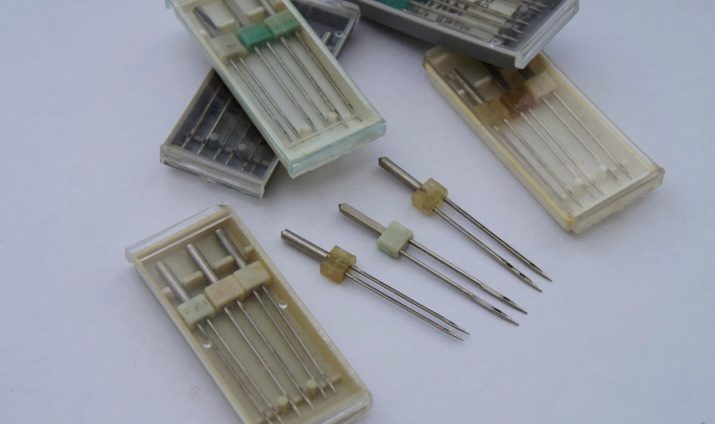
For how to sew with a twin needle, see below.








